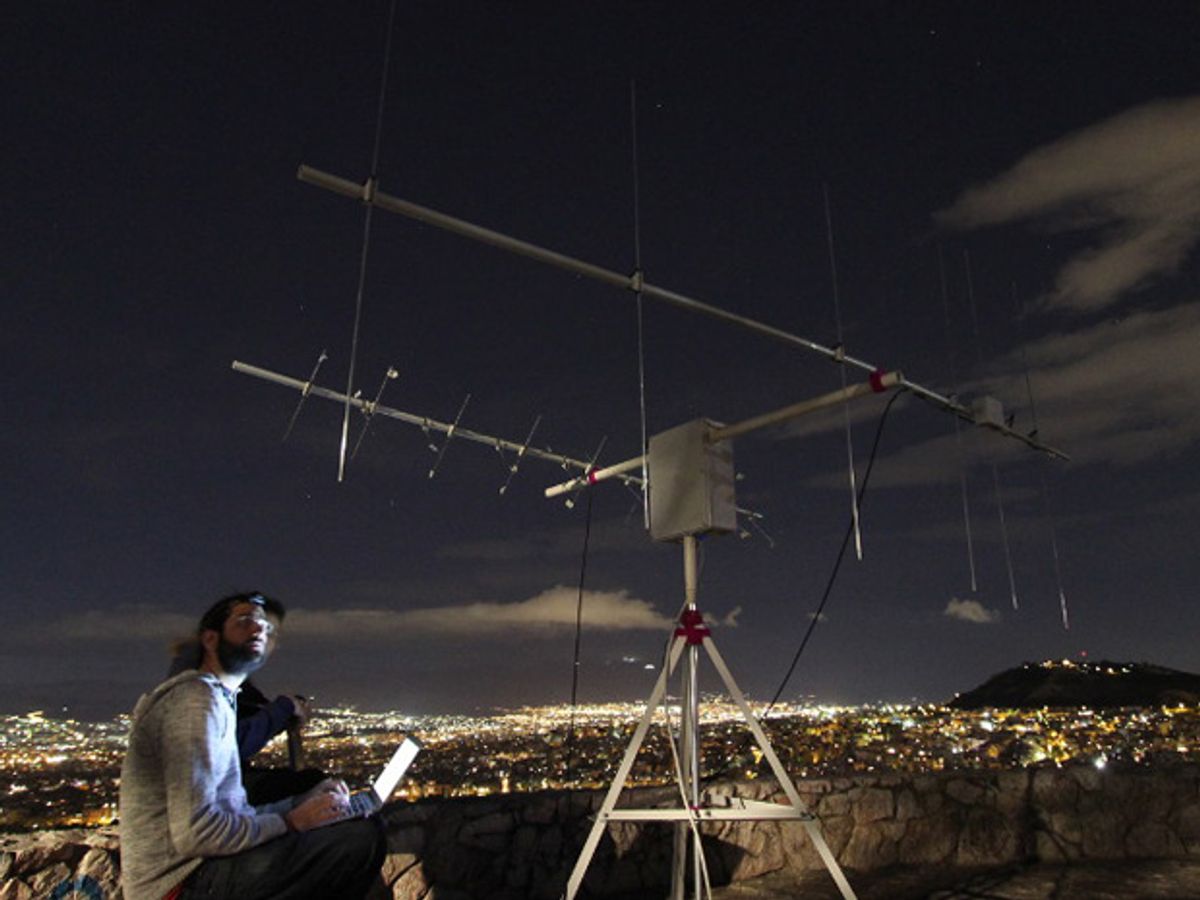First place in the Hackaday Prize was awarded today to “SatNOGS,” a project aiming to spin up a worldwide network of satellite ground stations—hence the project’s name, which is an abbreviation of “Satellite Network Of Ground Stations.” Its creators will receive either one paid ride into space, when such a ticket becomes available, or $196,418 (whose odd numeric value some astute readers may recognize as being a Fibonacci number).
The SatNOGS team edged out four other contenders in the final round of judging. Second place went to ChipWhisperer (a platform for security testing of embedded systems), third to PortableSDR (a compact software-defined radio), fourth to the Open Source Science Tricorder (a gadget for sensing various environmental parameters), and fifth to ramanPi (a Raman spectrometer based on the Raspberry Pi).
The SatNOGS project aims to serve enthusiasts who like to listen in to transmissions from the many satellites zipping around Earth in low or medium orbits. You can’t, of course, do that with a dish bolted to the side of your house. To do this right, you need a radio coupled to a high-gain antenna that can remain pointed in the right direction as the satellite of interest passes overhead.

The open-source design for such a DIY ground station is the main component of the SatNOGS project. But the project also includes facilities so that people from around the world can monitor satellites cooperatively. The idea is that the ground stations will communicate with a central server on the internet. The server acts like a network manager, sending instructions to the ground stations and receiving digital copies of the signals they record. Assuming enough people build these ground stations, and that they have good geographic distribution, the system should allow much more comprehensive monitoring of satellite signals than anybody working in isolation could manage.
So congratulations to the SatNOGS team. Not that they need my advice, but I’ll give it anyway: Take the money.
David Schneider is a senior editor at IEEE Spectrum. His beat focuses on computing, and he contributes frequently to Spectrum's Hands On column. He holds a bachelor's degree in geology from Yale, a master's in engineering from UC Berkeley, and a doctorate in geology from Columbia.



